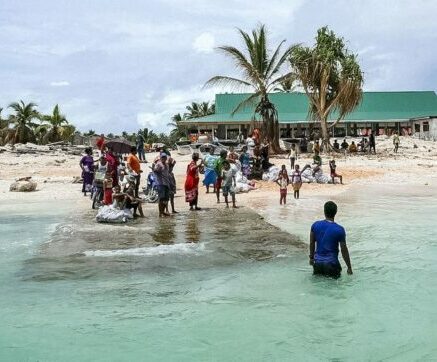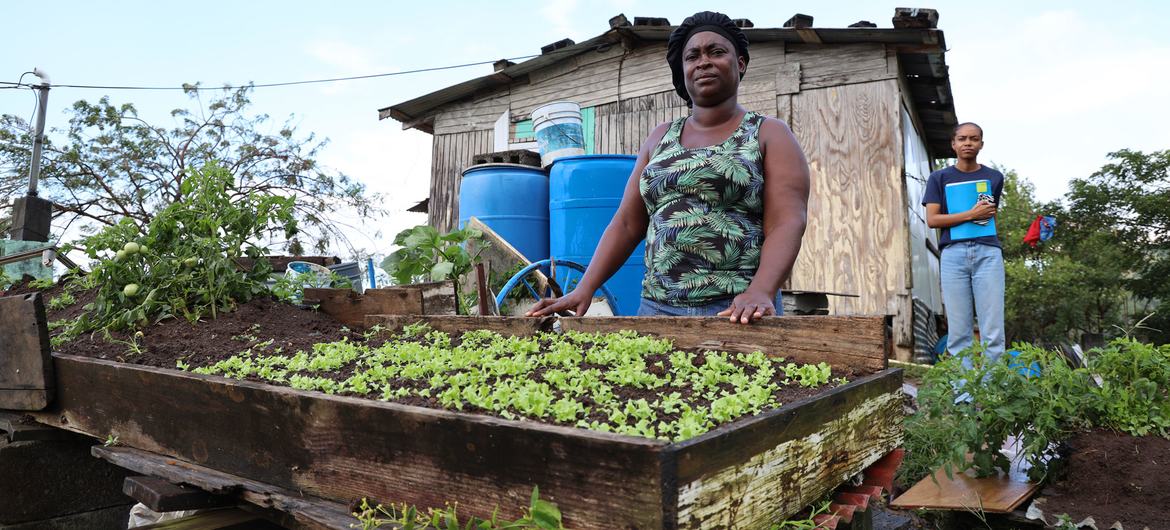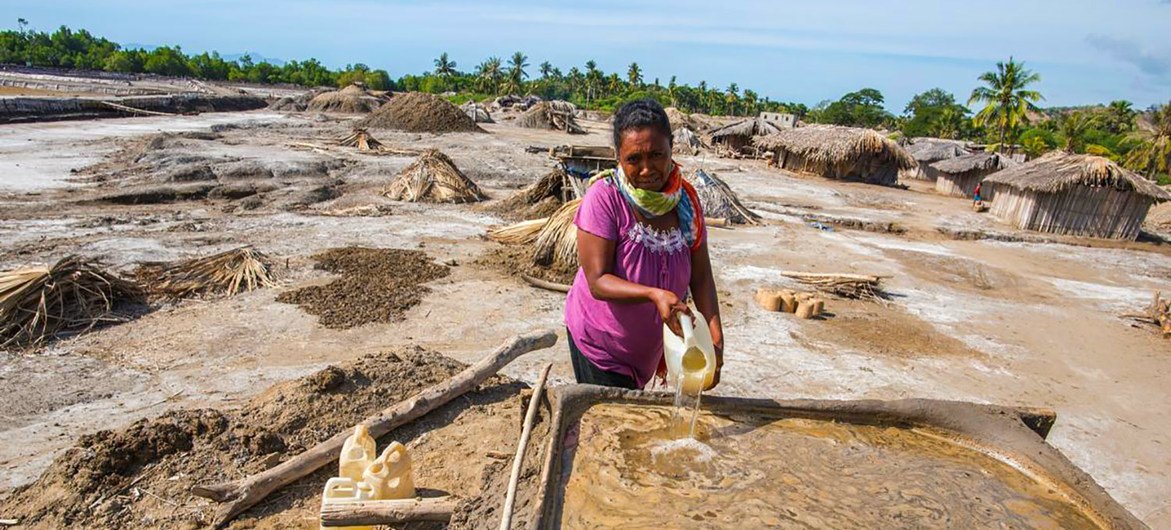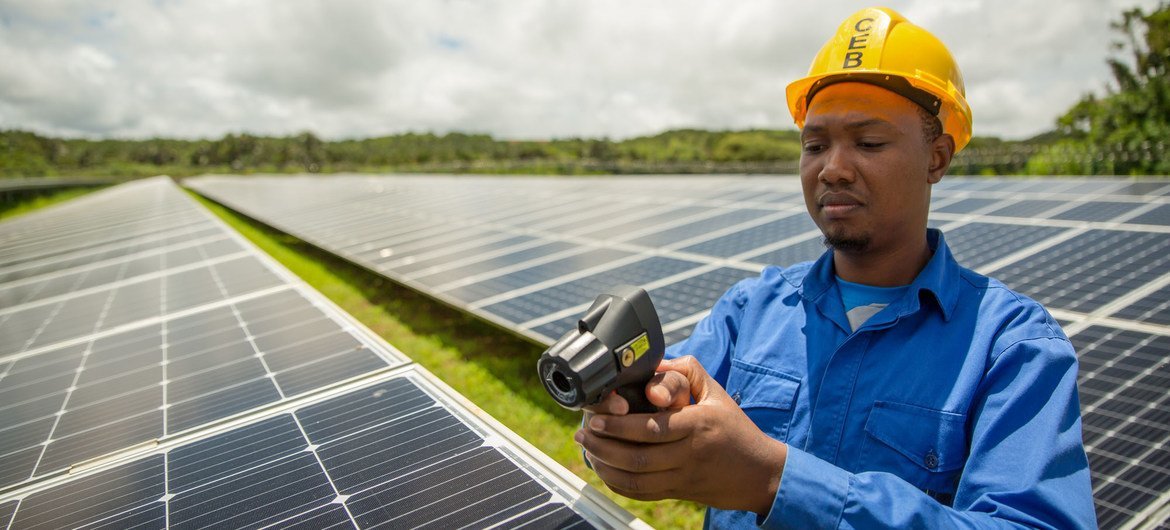You can now listen to Antigua News articles!

The community of Nui island waves goodbye to the Prime Minister of Tuvalu following his visit in the aftermath of the destruction of Cyclone Pam.
UN News
Leaders from small island developing States worldwide will converge on the shores of Antigua and Barbuda in the Caribbean this weekend to deliver a bold new plan of action to build resilience on the road to the 2030 Sustainable Development Goals (SDGs).
The Fourth International Conference on Small Island Developing States (SIDS4) will bring together governments, the UN, civil society, the private sector and leading youth voices to turn new ideas into action, raise new pledges of support and discuss the key challenges that lie ahead for the vulnerable group of nations.
Living on the edge
There are 39 SIDS, from conference hosts Antigua and Barbuda, to Vanuatu in the South Pacific, which were recognised as a special case for support during the 1992 UN Conference on Environment and Development, also known as the game changing first Earth Summit.
They are located in some of the world’s most disaster-prone regions, acutely vulnerable to sea level rise, climate shocks and natural disasters. SIDS have small domestic markets and are vulnerable to economic shocks and downturns.
Other challenges include rapid population growth putting pressure on basic services and job availability, while they are literally on the frontline of climate change and prone to environmental fragility.
Many SIDS lack sufficient resilience to deal with the rising incidence of natural disasters, something which the people of Antigua and Barbuda are all too aware of having suffered the devasting impact of hurricanes Irma and Maria which barrelled across the Caribbean in 2017.
Survival at stake
In an interview with UN News the country’s Prime Minister Gaston Browne said they were among the worst of the external shocks “literally decimating our economies and damaging our infrastructure, our buildings, our homes.”
He insisted that global collaboration to drive down global warming was essential if small island States are to survive the decades ahead:
Other common challenges include high import and export costs, limited natural resources, population density that is significantly higher than the global average, high debt and limited access to low-cost borrowing.
In 2014, SIDS met and agreed The SAMOA Pathway for action – expanding the UN body which stands up for the interests of landlocked developing countries and least developed nations – to include small island States.
Time to deliver
The UN Under Secretary-General and High Representative for the Least Developed Countries, Landlocked Developing Countries and Small Island Developing States in charge of that Office (UN-OHRLLS) Rabab Fatima told UN News ahead of SIDS4 – which runs from 24 to 27 May – that it will “deliver a bold new plan of action to build the resilience of 39 small island nations in tackling the world’s most pressing challenges and achieving the SDGs.”
She highlighted the consensus that has already formed around an agreed programme of action which delegates will take back to their respective capitals when they leave Antigua and Barbuda at the end of next week.
This new agenda will set out the sustainable development aspirations of small island States for the decade ahead.
Other common challenges include high import and export costs, limited natural resources, population density that is significantly higher than the global average, high debt and limited access to low-cost borrowing.
In 2014, SIDS met and agreed The SAMOA Pathway for action – expanding the UN body which stands up for the interests of landlocked developing countries and least developed nations – to include small island States.
Time to deliver
The UN Under Secretary-General and High Representative for the Least Developed Countries, Landlocked Developing Countries and Small Island Developing States in charge of that Office (UN-OHRLLS) Rabab Fatima told UN News ahead of SIDS4 – which runs from 24 to 27 May – that it will “deliver a bold new plan of action to build the resilience of 39 small island nations in tackling the world’s most pressing challenges and achieving the SDGs.”
She highlighted the consensus that has already formed around an agreed programme of action which delegates will take back to their respective capitals when they leave Antigua and Barbuda at the end of next week.
This new agenda will set out the sustainable development aspirations of small island States for the decade ahead.

In Saint Vincent and the Grenadines, Viola Samuel is able to grow vegetables in her backyard thanks to a WFP-supported Government training programme.
Renewed vows
“We are going there to renew our commitment to strengthen resilience and foster prosperity, collectively”, said Ms. Fatima, who is also Special Advisor to the SIDS4 conference.
“We need all hands on deck”, she added. “Therefore NGOs, civil society, government and the private sector, all of them have a role to play.”
She said the new strategy would help build resilience; scale up climate action; mainstream disaster risk reduction; strengthen safe and healthy societies; promote science, technology, innovation and digitalization; increase prosperity, employment, equality and inclusivity; and build partnerships.
To do this, there needs to be more support from the international community assembly in Antigua and beyond.
Fighting climate change on the frontline
But with limited resources, and greater vulnerability, how can SIDS think long-term when transitioning to renewables from fossil fuels, for example, might not be in their short-term interests?
Ms. Fatima said that island nations had been at the forefront of setting ambitious targets to make that transition.
“Many island nations have launched roadmaps towards meeting 100 per cent energy generation from renewable resources by 2030”, including the Solomon Islands, Vanuatu and Antigua and Barbuda.
In the Pacific, countries like Fiji, Samoa, Tonga, and the Federated States of Micronesia have made major investments in solar, wind and hydropower projects with support from financial institutions including the Asian Development Bank.
Caribbean islands Jamaica and Grenada have seen growth in rooftop solar, wind farms and other renewable energy projects.

A woman harvests salt in a mangrove in Timor-Leste.
Hope over fear
So, what are the positive takeaways the top UN official for small island State development would like to see emerge from Antigua and Barbuda?
“In addition to furthering the global agenda for sustainable development, my overarching hope is that the SIDS4 conference acts as a catalyst for good change, resulting in noticeable transformation in the lives of those who reside in small island developing States”, said UN-OHRLLS chief Ms. Fatima.
She called for concrete action plans to address the urgent problems that SIDS face and the strengthening of partnerships “among international organizations, development partners, civil society and SIDS.
Policy commitments are also on the wish list from other nations and organizations taking part to help SIDS reach the 2030 SDGs, “which could entail pledges to offer funding, technical assistance and capacity building.”
Ms. Fatima hopes that SIDS will be empowered to take charge of their own development plans and given the tools and support needed to put resilient and sustainable plans into action.
“I think judging the success of SIDS4 will be based on its capacity to spur significant action, gather resources and promote constructive change for the benefit of the people living in small island developing States.”

Solar panels being maintained by a worker at a photovoltaic farm in Mauritius.













0 Comments